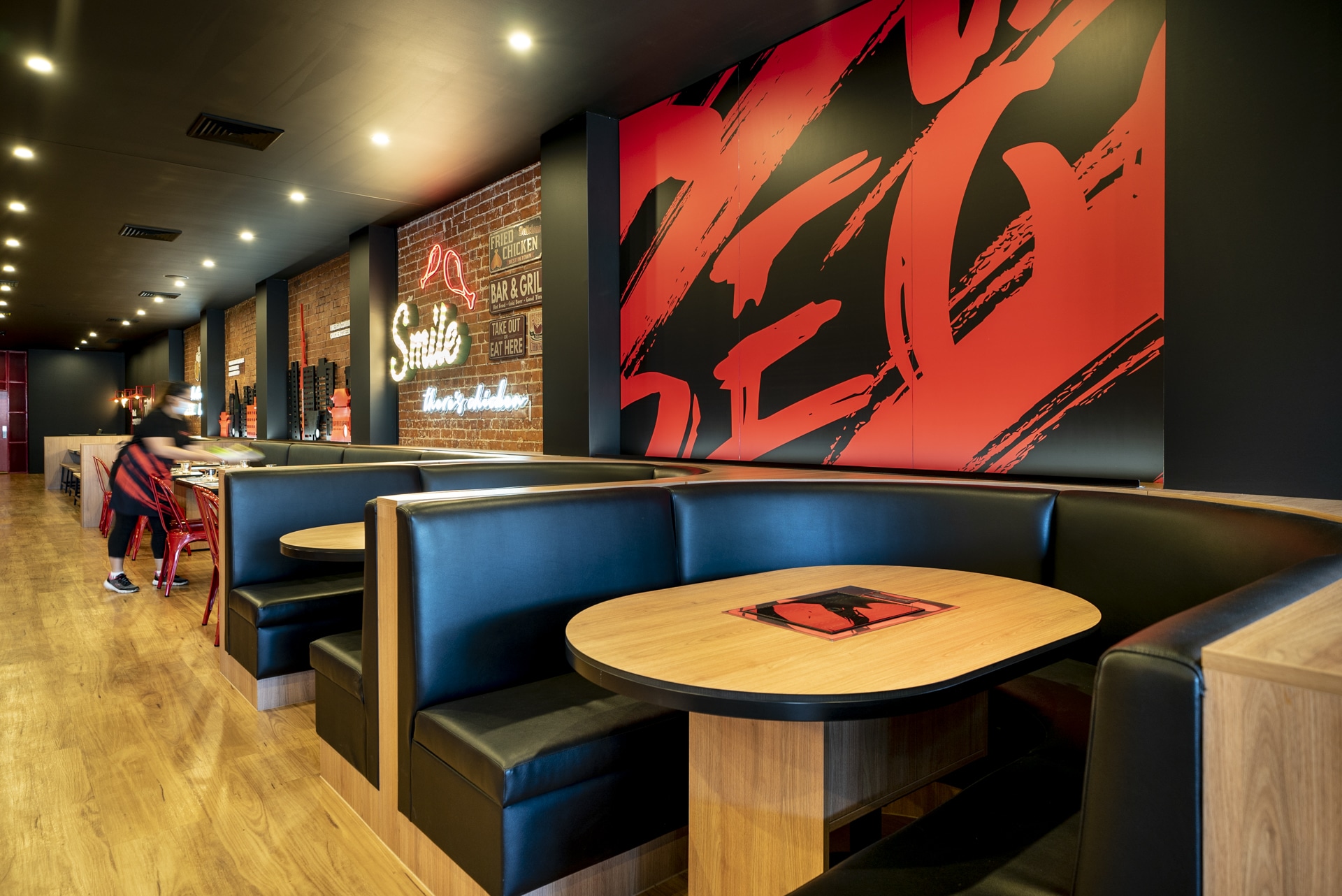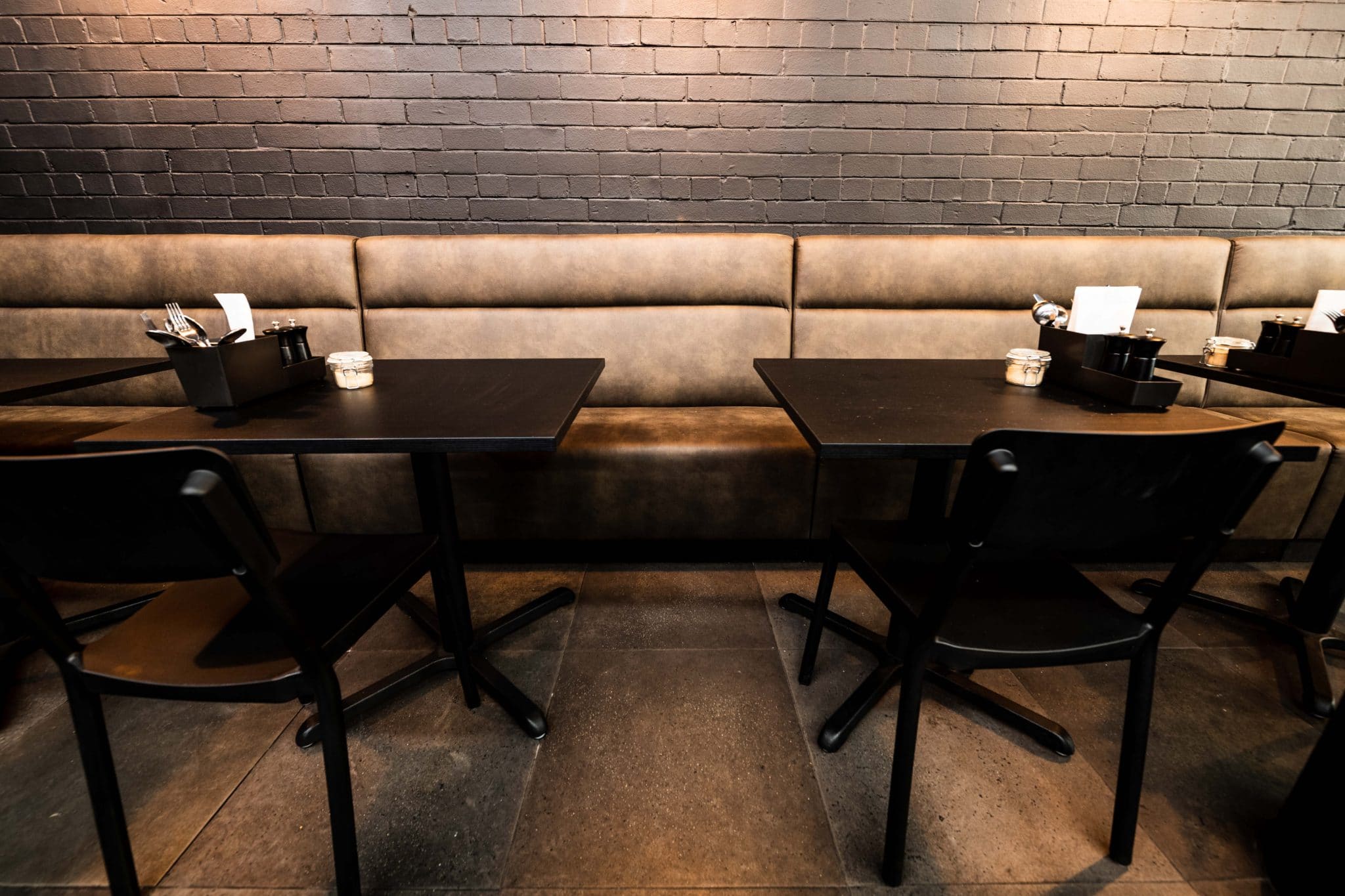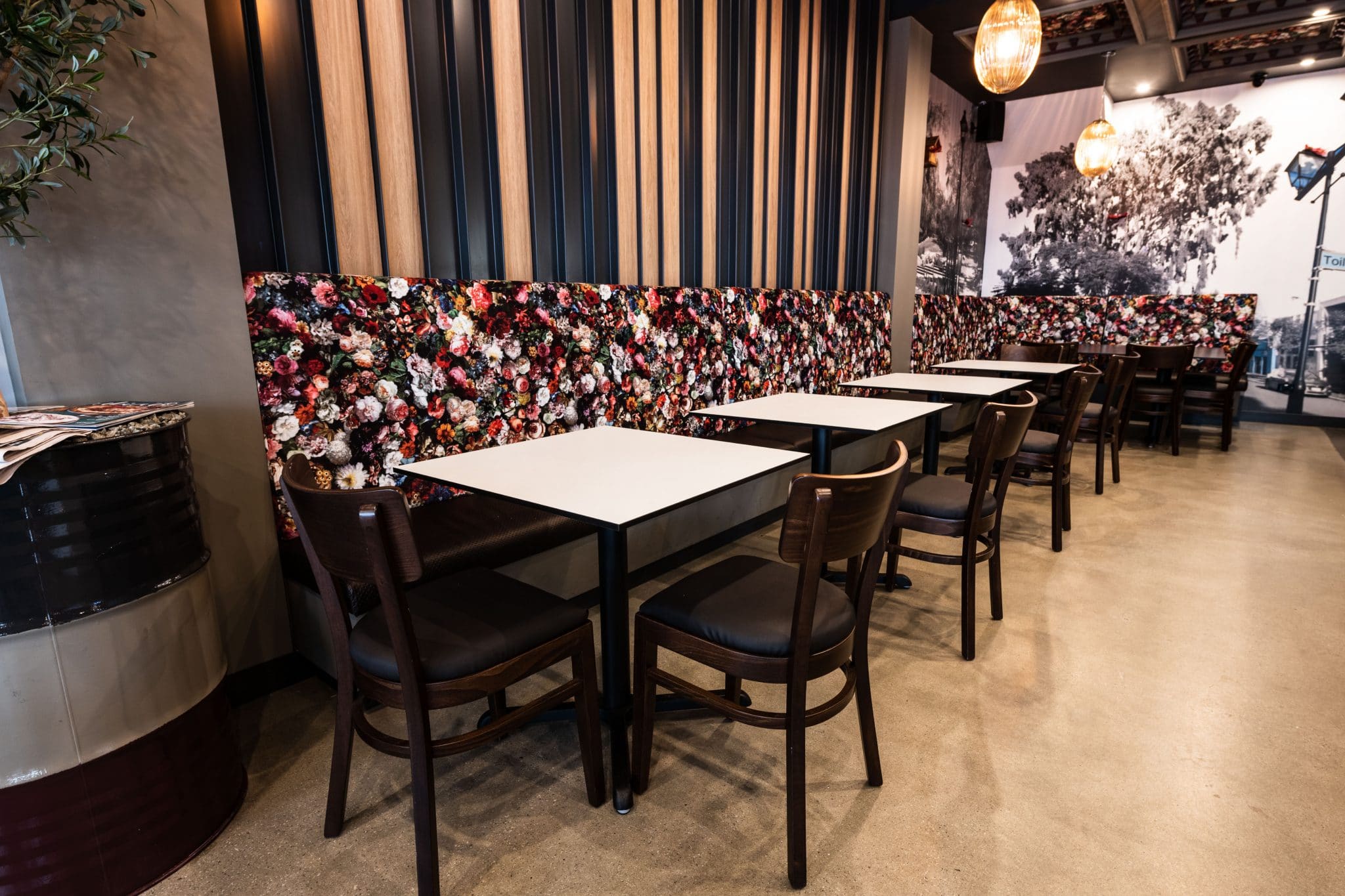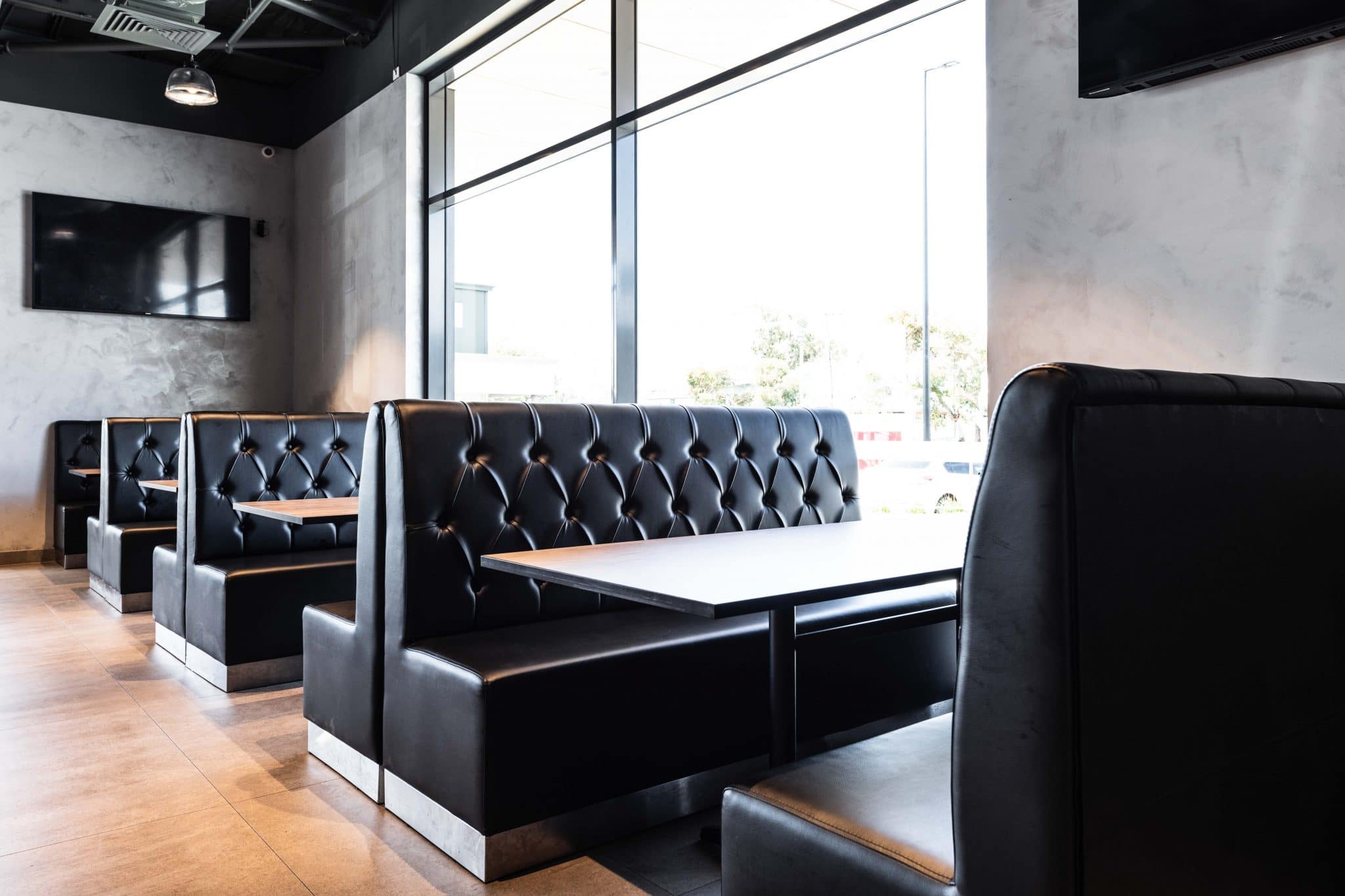Configuring your restaurant or café can take some time and energy – deciding what chairs and tables to include, and where you want to put them. A great addition to any venue is booth seating, but often there are many questions surrounding the cost of booth seating.
The great news here is that we can offer you a detailed pricing guide to help you with your booth seating choice.
Deciding on the booth seating for your venue can be a daunting task, especially if you have no idea what the venture will cost you. That’s why we’re here, to give you a better understanding of the cost of your new booth seating.
There is a lot that goes into the cost of booth seating, including the style you choose to run with, the materials that make up your booth seat and the manufacture origins.
How does the Style & Design affect the cost of booth seating?
The style and design of your booth seating is important – both in maintaining the atmosphere you want to create, as well as keeping the booth seating within your budget. The style of your booth seat will affect the price, as well as any extra details in design that you may look at.
Straight booth seating is the most common for a reason. These booth seats are the least expensive of booth seats due to the easy frames they sit on, and the amount of material used. Straight booth seating tends to use the least amount of material – both in the frame and in the foam and covering that is used across the booth seat.

Alternatively, a custom curved booth seat is more likely to cost a lot more. The frames for these booth seats must be made exactly to your specifications and more often than not require more materials. The fabric covering the booth seating also costs more as there is often more fabric covering the booth seat.
Fabric pricing is per lineal metre, and therefore the cost is charged as per the longest measurement. For example, a booth seat that is 1200 long will cost the same as a corner seat that is 600 x 600 as the outer length is the same. For this reason, corner booth seating is much less cost-effective than the long booth seating. On the same note, the more surfaces that the booth seat has that needs to be covered in fabric, the more the booth seat will cost.
Whether the back of the booth seat matches the front also affects the quantity of material used. If the booth seat is going up against a wall, the material on the back could just be a cover fabric which is much cheaper. However, if the back of the booth seat needs to match the front, that requires more fabric and therefore will drive the cost up.
However, its not only the shape and style of your booth seat that will cause a change in price, but it is also the details in the design of the booth seat that will increase the pricing. Various stitching methods or buttoning on the seats will also bring the price of the booth seat up. These features all add to the look of your booth seat and can change it from a seat with little character into a seat that becomes the centre of attention. Yet, these features will also increase the price you will pay for your booth seat.
Other design options such as storage spaces or angled kickboards also add to the cost of the booth seating. These custom changes drive the cost upwards as they each require careful planning and manufacturing, not to mention extra materials.

How do materials affect the cost of booth seating?
Apart from the design of your booth seat, you should also consider the materials used to create the booth seat. From the frame to the foam and the fabric covering the seat, all the materials affect the price that is asked.
At the core of the seat, the way the frame is made is a major factor in the resulting price a booth seat asks. Some booth seats are made with a chipboard frame. This would be the cheapest option; however, it would also be the option least likely to last. Chipboard is cheap and doesn’t carry the quality that pine, or plywood does.
Chipboard is a product made from wood waste products, which are held together using a resin. This results in a product that is soft and brittle, which can lead to cracking and splintering. Chipboard is a cheaper option for the frame of your booth seat; however, it may not be as hardy.
Alternatively pine wood and plywood are the better options for frame making. Plywood is created from thin veneers of milled wood compressed together with an adhesive. Although it is still an engineered wood product, plywood is strong and durable and would be the preferred material for the frame. It is also the more cost-effective material to be used.
Pine wood is strong and durable; however, it does cost more and therefore would mean the booth seat tends to be a bit more expensive.
The frame of the booth seat isn’t the only material that affects the cost of the booth seat, however.
The foam used on the seat of the booth also drives the cost up. Commercial grade foam will cost more; however, it is commercial grade and therefore is created to withstand the rigours of the hospitality environment. Cheaper foams may mean the booth doesn’t cost as much, but it will also mean the booth seat will be of lesser quality. The density of the foam will also affect the price of the booth seat – with less dense foam costing less than something a bit denser. Furthermore, additives such as fire-retardant properties will also add to the cost of the booth but will also add to the quality of the booth seat.
Finally, the top layer of the booth seat: the fabric. The fabric, vinyl or leather that is used to cover the booth seat is a major reason for a change in price. The pricing changes dramatically across the materials that are used. For example, a commercial vinyl might cost $15/m, whereas a designer material could cost north of $60-$80/m and a leather anywhere over $100/m2. As aforementioned, fabric is priced per lineal metre and therefore the more fabric a booth seat requires, the more the booth seat will cost.

How does size and configuration affect the cost of booth seating?
When it comes to booth seating, size is a definite factor that needs to be taken into consideration. One big booth seat will cost more than multiple smaller ones. One large seat is a lot harder to manage and therefore costs a lot more to manufacture and ship. Multiple smaller booth seats are easier to manufacture and far easier to deliver. Therefore, they will often cost a lot less than one large seat.
Size also mentions the height of the back of the booth seat. The height of the back of the booth seat will affect the price due the quantity of materials used to create the booth seat. Meaning that a booth seat with a lower back of 900mm will clearly be much cheaper than a booth seat of up to 1500mm high.
When it comes to the configuration of the booth seating, there are a few different ways a booth seat can be placed within your venue. Booth seats can be free-standing, meaning they can be placed on the floor without being bolted into place. This is the most common and least expensive version of a booth seat.
Alternatively, booth seats can be configured onsite and bolted in place. Whilst these seats most often don’t have a kickboard, they do require more work onsite and engineering to ensure they can be held in place to hold the weight of patrons. This all drives the cost of the booth seating upwards.
Or yet another version of a booth seat would involve legs coming out the bottom of the seat. This option sits more in the middle of the scale – somewhere between a kickboard, and a floating seat.
The kickboard is another feature that can drive the cost of the booth seat up. They can be as basic as painted chipboard or painted MDF, or as flashy as stainless steel. Sitting roughly in the middle of the cost bracket would be Laminex or laminated melamine. Those options are the most cost effective, whilst maintaining great quality.
How does the place of manufacture affect the cost of booth seating?
As with all commercial furniture, the country that the booth seat is manufactured in has a strong influence on the cost of the booth seat.
Imported booth seating is also much cheaper than locally made options. Locally made booth seating is made to a high standard with quality materials that cost more to manufacture. Not only do the resources cost more, but the labour also costs more. Therefore, locally sourced booth seats tend to be more towards the higher end of the cost scale.
However, on the other end of the scale, imported booth seating can be much cheaper but also be of lesser quality. Not all overseas factories maintain high quality levels, and therefore the booth seating may be cheaper, but the quality may not be very good. Consequently, it is important that tight quality controls are maintained at our end of the line to ensure that the product we supply is of the best quality for your venue.
